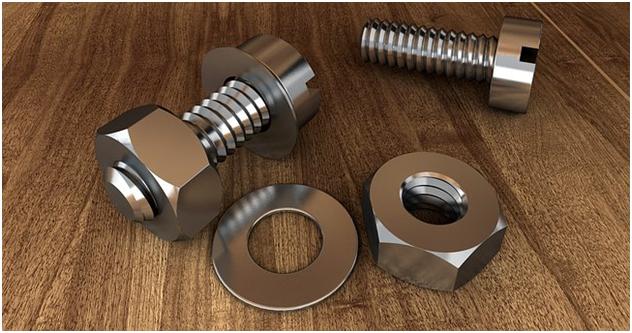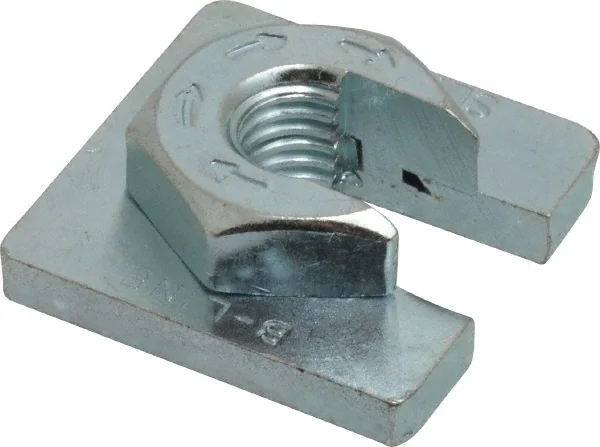So, how to level a washing machine? It’s crucial to ensure that a washing machine is level before installing or moving it, as well as if you’re unsure of why your current unit is rocking.
Here are quick steps on how to level a washing machine:
- Find Out If the Machine is Level
- Loosen the Lock Nut
- Adjust the Front Legs
- Check the Rear Legs
- Re-tighten the Lock Nuts
- Test the Washer
- Check Your Washer Every Few Months
Please read on for more detailed information.
How to Level a Washing Machine?
Regardless of the type of washing machine, the method for using a spirit level and making minor leg length adjustments is essentially the same. However, there are a few minor variations in the actual adjustment process for metal versus plastic legs.
Find Out If the Machine is Level
Use a bubble level for carpentry or look for a phone app that functions similarly. To check if it’s level, place your preferred device on top of the machine and tilt it first from side to side and then front to back. If the bubble doesn’t center on its own, you’ll need to make some adjustments.
Loosen the Lock Nut

The two front legs of the washer are adjustable up and down. You must remove the lock nut from each one before making any adjustments.
Adjust the Front Legs
Sitting low to the ground will reduce the machine’s vibration risk. Screw one leg all the way in to keep the appliance as level as possible, then adjust the other legs as necessary until the washer sits flat in accordance with your carpenter’s level or smartphone app.
Check the Rear Legs
The back legs of most washing machines are self-leveling. Once the appliance has been leveled from side to side, you should tip it forward with the assistance of a second person so that the back legs lift three to four inches off the ground. The washer’s legs should automatically adjust when you place it back down so that it is level from front to back. However, some washing machines also have a set of movable legs in the back that can be adjusted. The rear legs must be manually adjusted in this situation in order to level the machine.
Re-tighten the Lock Nuts

After making all the necessary adjustments, make sure the washer is level front to back and side to side. As a final step, tighten the lock nuts against the machine to stop the machine’s legs from rotating over time. To prevent it from rocking back and forth, lean against the appliance.
Test the Washer
Run the spin cycle and look for overly vibrating parts. Check again to make sure that all of the screws on the stacking units and storage bases are tight if the washing machine is still shaky. Finally, evaluate the floor of the laundry room. Leaks could make the floor rotten and uneven, necessitating replacement.
Check Your Washer Every Few Months
Your home may settle over time and even change from season to season. If you experience excessive vibrations, check the level of the washer again. Then, remember that unbalanced clothing in a top-loader can result in shaking during the spin cycle, so take the time to load each batch equally. Additionally, because front-loading appliances use significantly faster spin speeds than top-loaders, you should check the balance of your unit every few months.
Warnings
Even if you’re only lifting the washer a few inches, try to enlist some assistance. Washing machines are heavy, and using them too forcefully can hurt your back. One person can support the weight of the machine while the other places the wooden block underneath, as in the case of propping the legs up with a wooden block while adjusting them.
When to Level a Washing Machine
A washing machine should only be leveled after the water has been drained from the drum. Start the spin cycle to empty the drum if it’s safe to do so. If not, manually drain water using a measuring cup from the kitchen.
Straightaway level a washing machine. Beyond the manufacturer’s maximum recommended slope, there is no safe operating slope for washing machines.
Read about How Long Does a Washing Machine Take?
How Washing Machines Become Out of Level
An out-of-level washing machine can be caused by issues with the flooring, obstructions under the machine, or by improperly adjusted front legs. Common causes include:
- Rotted floor covering
- Deficient subfloor and joists
- Machine resting on soft surface, like carpeting
- Floor not level
- Spins with improperly loaded or heavy itemslike bedcovers displacing machine
- Machine feet changing height over time
- Front-loading washerspinning faster than top-loading washer, causing misalignment
- Plastic washing machine pan out of alignment
- Loose heavy-duty anti-vibration pads under washer feet

How to Tell If Your Washing Machine is Unbalanced?
Washing machines that aren’t balanced will shake, rock back and forth, and bang around the laundry room. You’ll hear obnoxious noises coming from it.
The shaking might be sufficient to harm your washer, as well as the nearby furniture, walls, and floors. If the shaking is severe enough, it could harm the connections or hoses, leading to further leaks.
Suggested reading: Even though Vans shoes are built to withstand the abuse of skateparks, they occasionally need some tender loving care. Here’s the question, can you put vans in the washing machine?
Conclusion on Leveling a Shaking Washing Machine
No matter if it’s a Whirlpool or a Maytag, the first thing to do if your washing machine starts dancing across your laundry room is to check the load. Because you’re washing heavy items or a large load, it might have become unbalanced during the spinning cycle.
Next, determine whether your washer’s legs need to be adjusted in order to maintain balance. If your floor is uneven, you could also build a platform to raise your washing machine. Anti-vibration pads will also aid in leveling your washer and halt excessive vibrations.
How to level a washing machine?
- Find Out If the Machine is Level
- Loosen the Lock Nut
- Adjust the Front Legs
- Check the Rear Legs
- Re-tighten the Lock Nuts
- Test the Washer
- Check Your Washer Every Few Months
The kind of crocs you own will affect how you should wash them. Can you put crocs in the washing machine? To avoid damaging your crocs when washing them, you should first read this post.
FAQs
How Do You Level a Washer in a Tight Space?
If your washing machine is in a small space, especially if it’s under a counter, you will have to experiment to level it. Check the level of your washer by placing the spirit level on it. After adjusting the legs, push the washer back in and check to see if it’s level.
You can level your washing machine with a little time and effort.
How Do You Realign a Washing Machine Drum?
For a variety of reasons, the washing machine drum may start to tilt. Make sure the load inside the washing machine is distributed evenly before realigning the drum. After that, make sure the washer is level by checking.
The suspension springs, bolts, or bearings inside the washing machine may be the cause of your problem if it persists.
How Do Self-Leveling Washer Legs Work?
To level the washing machine from front to back, the self-leveling rear legs automatically adjust.
See also



